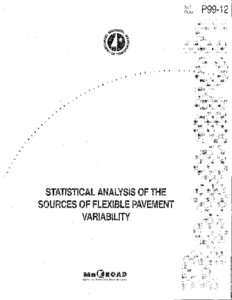Displaying results 1 - 6 of 6
Portland Cement Concrete Pavement Thickness Variation Versus Observed Pavement Distress
Date Created
2016
Report Number
2016-30
Description
Statewide Statistical Subgrade Characterization
Date Created
1995-06
Report Number
95-16
Description
Effects of Seasonal Changes on Ride Quality at MnROAD
Date Created
2008
Report Number
2008-23
Description
Statistical Analysis of the Sources of Flexible Pavement Variability
Date Created
1999-09
Report Number
P99-12
Description






